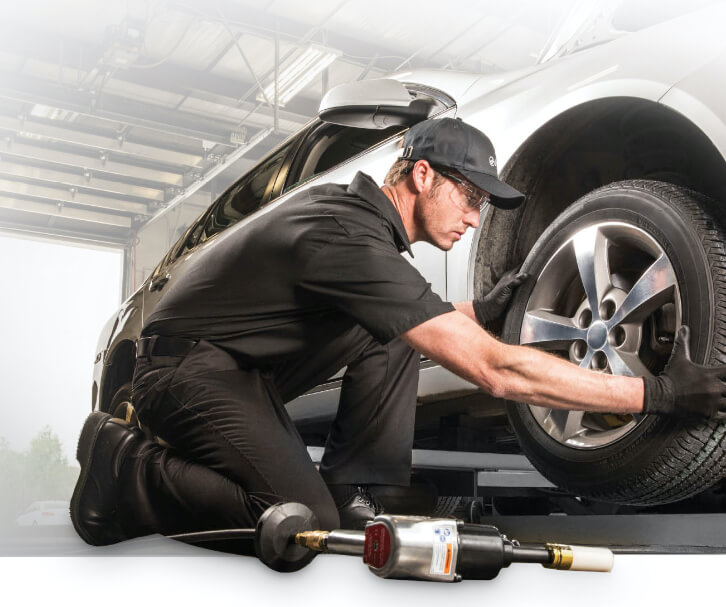Morris Tire: Exceptional Tire Solutions for All Automobiles
Morris Tire: Exceptional Tire Solutions for All Automobiles
Blog Article
Tire Repair Work Myths Debunked: Separating Truth From Fiction
In the world of automotive maintenance, tire repair holds a substantial place, yet it is commonly shrouded in myths and misconceptions that can lead to confusion for vehicle owners (tire tracks morris il). From the misconceptions bordering patching versus plugging a punctured tire to the efficiency of various tire sealers, there are numerous essential locations where clearness is required to make informed decisions.
Typical Tire Repair Work Misconceptions
Eliminating widespread misconceptions surrounding tire repair work is vital for keeping road security and expanding the long life of your vehicle's tires. It is essential to understand that not all slits are produced equivalent; while some may certainly require a tire substitute, the majority can be securely repaired.
Another false impression is the idea that a DIY tire fixing set is a sufficient remedy for all tire concerns. While these packages can be useful for short-lived solutions in emergencies, they are not an irreversible service and may not attend to the underlying problem (discount tires morris il). Seeking the proficiency of a qualified tire specialist is always suggested to make certain the safety and stability of the tire

Can You Repair a Punctured Tire?
Repairing a pierced tire is an usual practice in the automobile industry, frequently lugged out by specialist specialists following specific standards and standards. Leaks located on the walk location of the tire are typically repairable as lengthy as they are within a specific size restriction and do not impact the tire's architectural honesty.
It is very important to keep in mind that penetrates near the sidewall or shoulder of the tire are generally not repairable because of security issues. Such areas undergo considerable anxiety and flexing, making repair services unstable and possibly unsafe. Furthermore, if the slit is as well huge, exceeding the suggested repairable dimension, or if the tire reveals indicators of interior damage, it is much safer to replace the tire entirely.
The Reality Regarding Patching Vs. Connecting
When considering the fixing of a punctured tire, recognizing the distinctions in between patching and plugging is important for making educated choices relating to tire maintenance and security. Covering involves fixing the tire from the inside, where a patch is related to cover the puncture. This method is considered more trustworthy and durable as it attends to the damage internally, reducing the threat of air leakage and further tire damage. On the various other hand, plugging is a quick repair that includes placing a rubber link into the punctured location from the exterior. While connecting is hassle-free and can be done without eliminating the tire from the edge, it is generally taken into consideration a short-term remedy and may not give the exact same degree of longevity as a patch.
Myth: All Tire Sealants Work

When choosing a tire sealer, take into consideration aspects such as the size of punctures it can successfully fix, compatibility with tire pressure surveillance systems (TPMS), and whether it is safe for the tire material. Keep in mind, while tire sealants can be helpful in emergencies, they are not a substitute for appropriate tire treatment and maintenance.
Ideal Practices for Handling Flat Tires
In light of the varying performance of tire sealants, understanding ideal practices for managing blowouts is critical for maintaining roadway security and automobile performance. When encountering a puncture, the very first step is to securely pull over to the side of the road, far from oncoming website traffic. Activate danger lights to signal various other vehicle drivers of your scenario. It is recommended to use the hand brake and location wheel wedges under the tires to avoid the lorry her comment is here from rolling. Next off, consult your lorry's handbook to situate the extra tire, jack, and lug wrench. Prior to trying to transform the tire, ensure that the location is flat and steady. Loosen the lug nuts, increase the lorry with the jack, eliminate the lug nuts and level tire, and replace it with the extra tire. Tighten up the lug nuts in a star pattern, reduced the lorry, and safely tighten up the lug nuts. Finally, stash the blowout, devices, and devices, and remember to examine the spare tire's stress regularly. Following these ideal methods can assist you handle punctures successfully and safely.
Final Thought
Finally, it is essential to different truth from fiction when it involves tire fixing misconceptions. Recognizing the reality about covering vs. plugging, the effectiveness of check my reference tire sealers, and best methods for managing flat tires can aid make sure the safety and longevity of your tires. By exposing common mistaken beliefs and complying with appropriate fixing guidelines, you can make enlightened decisions when it involves preserving the wellness of your lorry's tires.
Report this page